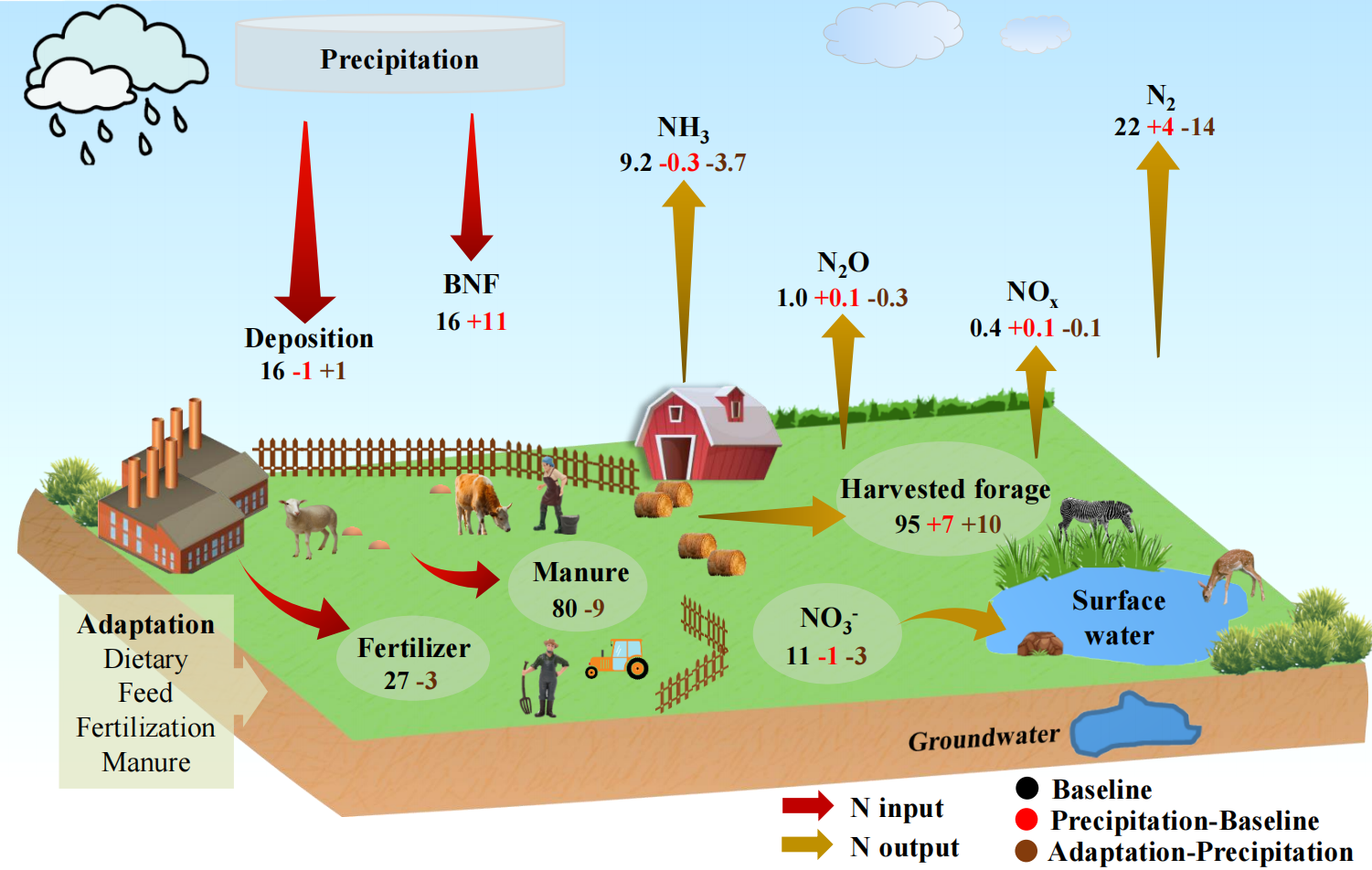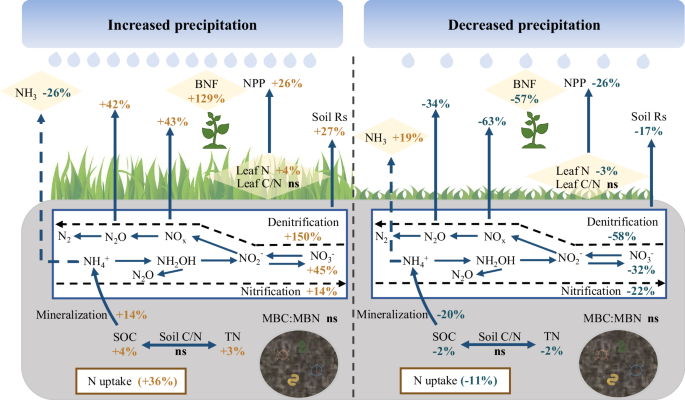Shifts in precipitation regimes exacerbate global inequality in grassland nitrogen cycles
Published in Earth & Environment
Grasslands are among the most widespread terrestrial ecosystems, playing a critical role in maintaining global biogeochemical cycles, regulating regional and global climate, and supporting biodiversity. However, future climate change could significantly impact global grasslands, particularly with precipitation changes. The effects of altered precipitation regimes on grasslands vary between arid and humid regions, affecting not only productivity but also nutrient cycles. Our research systematically integrates the responses of all nitrogen variables to precipitation changes on a global scale. We find that the responses of the nitrogen cycle to precipitation changes exhibit global heterogeneity, which could influence regional development and exacerbate inequalities between countries.
Global trends and regional disparities
Through the synthesis of 2,944 experimental observations and the integration of multiple models, we investigated the effects of altered precipitation regimes as a single climate change driver on nitrogen cycle of grasslands. Under future precipitation scenarios, without appropriate adaptation measures, global nitrogen input, nitrogen harvest, and nitrogen surplus from grasslands are projected to increase annually. However, regional disparities are significant. In areas where precipitation is projected to increase, such as the United States, northern Australia, and much of Asia, the increased precipitation could enhance grassland productivity. This would greatly support livestock production in these regions. Conversely, in areas with decreased precipitation, especially in Sub-Saharan Africa, Latin America, Southeast Asia, and South Asia—regions characterized by low- and middle-income economies—there may be challenges in meeting the growing demand for food and protein. These regions could face increased ecological stress, exacerbating food security issues.

Key to mitigating negative effects of climate change
To mitigate these potential adverse effects, it is crucial to adopt sustainable and integrated management approaches. In the future, it will be crucial to ensure the efficient application of fertilizers and manure management with the changing precipitation regimes. Additionally, improving the quality of forage and refining livestock feed formulas can reduce the energy requirements for feed, thereby minimizing the reactive nitrogen loss. Ongoing collaboration among scientists, pastoralists, policymakers, and the public is essential. By implementing appropriate management strategies, it is possible to reduce global nitrogen input and nitrogen surplus, while simultaneously increasing nitrogen harvest. These adaptive measures can not only enhance grassland productivity but also help avert exacerbated environment risks.

Future challenges
-
Data limitations: The experimental data used in this study span continents and climate zones. However, due to the high financial and logistical demands of precipitation manipulation experiments, data from tropical and developing regions remain limited. The lack of data from these areas introduces uncertainty, highlighting the need for more research in these regions moving forward.
- Multi-factor challenges: Climate change encompasses multiple factors, including elevated carbon dioxide concentrations, global warming, altered precipitation patterns, and extreme weather events. All of these factors collectively influence grasslands, but due to their distinct mechanisms and interactions, it is challenging to address them comprehensively in a single study. Moreover, there is currently a lack of a global dataset that captures the combined effects of carbon dioxide, temperature, and precipitation, which limits the feasibility of integrating these variables into a unified framework. Given these complexities, independent studies focusing on individual climate drivers remain necessary and will provide valuable foundations for future integrated assessments.
- Considering species shifts: Altered precipitation regimes could trigger adaptive shifts in grassland species composition, potentially amplifying or mitigating the direct effects of precipitation changes. Future research should combine species turnover models with climate predictions to better understand the feedback mechanisms of grassland nitrogen cycles under different climate scenarios.
Although climate change presents numerous challenges, it also provides an opportunity to rethink and optimize grassland managements. We encourage broader discussions with researchers, policymakers, and environmental managers regarding these findings. How can we more accurately predict future changes in grasslands under climate change? And how can we develop more effective management strategies to adapt to these changes?
Follow the Topic
-
Nature Communications

An open access, multidisciplinary journal dedicated to publishing high-quality research in all areas of the biological, health, physical, chemical and Earth sciences.
Related Collections
With Collections, you can get published faster and increase your visibility.
Clinical trials 2025
Publishing Model: Open Access
Deadline: Dec 31, 2025
Women's Health
Publishing Model: Hybrid
Deadline: Ongoing


Please sign in or register for FREE
If you are a registered user on Research Communities by Springer Nature, please sign in